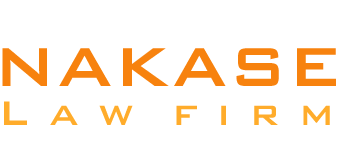What is a focus group?
Conducting market research using focus groups allows businesses to learn more about their target audiences, consumers, product and service views, perceptions of their brands, and any other aspect of their marketing and operational operations.
Expert moderators, or a team of moderators, are crucial to the success of any focus group because they guide the discussion, ask pertinent questions, and draw out meaningful thoughts from the participants.
The objective of any focus group is to get everyone’s thoughts and opinions on the same topic by having everyone speak.
Step 1: Identify your objectives
An agenda item is required for each focus group discussion. Most of the time, a focus group’s goal is to verify or reject an idea or view. You should formulate your hypotheses and identify your research objectives before beginning yours.
Take MmmHop, a firm that makes culinary products with cricket flour, as an example. Imagine you are the CEO of MmmHop. Instead of the overly sugary alternatives sold at major grocery shops, your objective is to deliver children tasty, nutritious, protein-packed snacks, meal bars, and desserts.
You need to know how people react to eating bugs so you can make the best marketing decisions and get your product into stores. You think cricket flour is a great substitute that others should try. If you want to know who is more inclined to give insect-based flour a try and who isn’t, you should get a sense of people’s genuine thoughts on the matter. Having a good grasp of each may assist direct your marketing choices, spanning from messaging to ad expenditure and beyond. In addition, you can get the information you need by conducting a series of focus groups.
Step 2: Figure out the breadth of your research
Focus groups, if left unchecked, can grow into far larger undertakings than you had anticipated. To ensure that your team produces the most valuable research outcomes, it is necessary to establish clear boundaries based on your objectives or desired results. Establishing the breadth of your study allows you to design more appropriate sample groups and formulate more intelligent, data-driven research questions.
For example, as the head of MmmHop, you’re interested in finding out how open people are to consuming cricket-based cuisine, particularly kids and their parents. Typically, children and their parents are the target market for food products that are rich in carbohydrates and sugar, but you made your product to offer a healthier alternative. Your study may aim to assess the product’s reception and perception by the following groups, as you would like your items to do well in the market:
- Infants and toddlers
- Families with teenagers
- Certain economic brackets of families
- Members of diverse ethnic backgrounds
To properly build your groups and choose what questions to ask them, you need first define what your scope should be.
Step 3: Select Your Interest Groups
After you’ve established your project’s scope, the next step is to determine the best groups to interview in order to complete the research phase. When deciding which groups to address, it’s important to keep in mind that there are a myriad of options, some of which are more efficient than others.
The purpose of doing a focus group is to get insight into the opinions of a specific subset of your target audience, not to generalize about the public’s thoughts or views on the subject. Because focus group members might not know the answers to your group-specific questions or give as much information as a deliberately chosen sample group, randomly picking participants is typically not a feasible option.
Returning to MmmHop, one of your objectives is to get opinions from parents over the safety of cricket flour products for young children. You think parents should be interested in feeding their children MmmHop products because to the nutritious benefits and high protein content of cricket flour. The problem with using a random sample is that it can contain a lot of individuals without children, which means you won’t get the best suggestions from parents who have small kids.
The most effective strategy is to form many focus groups that are relevant to your study and are able to provide different viewpoints and ideas. You might choose to consult with one of the following regarding MmmHop:
- Early childhood educators
- Adolescents’ parents
- Kids
- Young adults
- Parents who are health-conscious
- Parents who choose less nutritious options
You shouldn’t feel obligated to talk with every single interest group, but it’s smart to do so in order to gather a wide range of perspectives that can inform your decisions.
Step 4: Make a list of questions for every group
The success or failure of your analysis hinges on your ability to formulate research questions.
Asking groups questions that aren’t well-thought-out might leave you wanting more information, but questions that are well-formulated usually result in more meaningful replies and better feedback.
The following are some guidelines to follow when developing questions for a focus group:
- Make your queries more in-depth and difficult to answer with a yes/no.
- For instance, you may inquire, “What are your thoughts on consuming a product formulated with cricket flour?” rather than “Would you consume a product containing cricket flour?”
- Be open to several possible interpretations of the questions you pose.
- Do not ask participants “leading” questions that you intend them to answer a certain way. Asking something like, “Would you give your children items made with cricket flour because it’s healthier than other flour options?” is an example of this type of inquiry.” A less direct inquiry may go something like this: “If you were to give your children a flour substitute, how likely would you be to give them items that use cricket flour?””
Asking questions that are particular to a group is essential. To illustrate the point, it would be inappropriate to offer questions more appropriate for parents of teenagers in a focus group consisting of parents with younger children.
At most, you should ask each group ten questions. Since these questions are (or should be) meant to be discussion starters, you don’t want to bombard your participants with too many questions at once. When coming up with questions, make sure they promote a balanced debate of the issue and that you don’t repeat yourself.
Step 5: Pick the members of your group
No more than ten individuals should make up a focus group, as previously stated. It is ideal to have six to 10 people take part. In order to fill out your focus group, you can use one of many approaches; the two most popular are:
- Giving them the chance to sign up as volunteers
- Asking people to take part
Depending on your strategy, you may either increase the probability of collecting randomized samples or make sure that each sample group is comprised of individuals who share interests. Posting fliers on college campus or scheduling sponsored ads on social media platforms, for example, is likely to result in a more random selection of participants, particularly if you do not define the qualities or attributes you are seeking for. By sending out individual invites, you may improve your sample size matching the details of a group’s interest.
Members of the group will inevitably know one another in certain situations. To get a feel for how people feel about specific procedures, schools could form focus groups consisting of instructors and students. The majority of people in both groups will already know one another. Having people who aren’t familiar with one another answer your questions more honestly can assist ensure that they aren’t biased or swayed in any way.
Step 6: Pick the Times, Places, and Moderators You Want to Work With
Who Needs to Moderate?
Your team or you can act as a moderator in a focus group if neither you nor the participants are familiar with each other or with your position within the organization. On the other hand, it would be perfect if there was an impartial third party moderator who could steer the discussion without swaying opinions or answers.
People are more inclined to keep their ideas and impressions to themselves when they know the person they are talking to has a strong financial interest in the firm or organization. Furthermore, there is a danger of leading questions or steering the discussion in a specific way if those with vested interests are in charge of the focus group, rather than allowing it to develop naturally.
The likelihood of getting replies free of outside interference increases by using a third-party moderator.
One or two more co-moderators, in addition to the discussion leader, are required to keep an eye on participants, take notes, and generally keep everyone on task.
Where and when?
With the right moderator, you can set up times and places for your focus groups. It is important to allow adequate time (usually 90 minutes to two hours) when scheduling a meeting so that everyone has a chance to ask questions and get answers. Be mindful that people’s ability to stay engaged in a conversation diminishes as its duration increases.
The most productive settings for focus groups are those that are peaceful and undisturbed. Instead of a heavily populated space or location, a less crowded one, such a conference room or even a vacant classroom, is better.
Step 7: Stage your focus group
So, you have gathered your team, decided on a venue, selected a day, and made a timetable. Feel free to hold discussions now!
A third-party moderator has likely had training in public speaking, which will put participants at ease and ensure that they are well-prepared to engage in the discussion. If you, a teammate, or an amateur moderator want to steer the conversation, though, there are a few things to bear in mind.
Ways to Keep a Focus Group On Track
- Have coffee and donuts on hand.
- Start with one or two icebreakers to help people calm down or get ready for the talk.
- Remain impartial in the room regardless of the conversation. Maintain a neutral stance when responding.
- Be mindful of your body language when showing evidence of active listening; for example, don’t nod, shake your head, or raise an eyebrow.
- Share the floor with the more outspoken members of the group and let them have their say, but also make sure the quieter ones get a chance to speak out.
- Obtain consent from participants before recording the conversation so you may take notes and gather data.
- Thank everyone who took part in the conversation and distribute any prizes, such as cash or gift cards, at the end of the session.
Step 8: Review the responses
After a focus group has concluded, the last step is to analyze the results. The tape needs to be transcribed and any handwritten notes cleaned up. After that, you can look for themes, patterns, or talking points that come up again and again in the answers.
After you’ve looked over and analyzed everything, you can make a report that will help you understand the different topics, the initial goals, and the next steps in your business or marketing plan.
Conclusion
A great approach to understand your customers or other people that depend on your business is to conduct focus groups. Through a series of carefully thought-out and prepared conversations with interested participants, you can get useful data and knowledge to inform or refocus your marketing choices.
Using focus groups, you may gain insight into the thoughts and feelings of a selected group of people. Results from a single focus group discussion might provide great insight into certain concepts or subjects, but it is important to remember that a single group does not reflect your whole customer base.
The goal of conducting focus groups is not to collect numerical statistics, but rather to gather detailed feedback and impressions from your target audience on certain subjects.






























